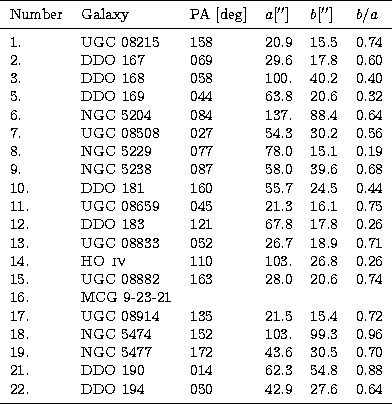 |
These parameters were then used to obtain the total light profile (growth curve) by integrating the galaxy light in elliptical apertures of increasing equivalent radius. A surface brightness profile is obtained by differentiating the growth curve. The galaxy profiles derived in this way include the bright regions that usual ellipse fitting routines ignore. Circular aperture growth curves were also obtained as in Paper I. The resulting profiles by the elliptical aperture photometry are shown in Fig. 3 and the derived photometric parameters are shown in Table 1. The circular aperture photometry served as a comparison between the photometry presented here and that of Paper I. This comparison is given in Appendix A, where it is shown that the agreement between the two methods is excellent.
The profiles are traced down to the level where the errors due to the
fluctuations in the sky level on the profile become dominant. As
discussed in Sect. 4.4, this represents approx. ![]() in B and
in B and ![]() in R.
in R.
The photometric calibrations were done using standard methods, with calibration fields chosen to be relatively close on the sky to the observed galaxies. These fields were taken from Smith et al. (1985). The calibration stars were imaged before and after imaging every second galaxy.
Galactic absorption values were taken from the NED database, and are essentially zero for all galaxies in the sample (AB = 0.00 for all galaxies except NGC5204 which has AB=0.01). Therefore no correction was applied. A correction for internal extinction was not applied either.
Copyright The European Southern Observatory (ESO)